Nasal Congestion In Infants – Symptoms and Causes You Should Be Aware Of!
As a new mother, you must be aware of the Nasal Congestion In Infants along with its Symptoms and Causes in babies.
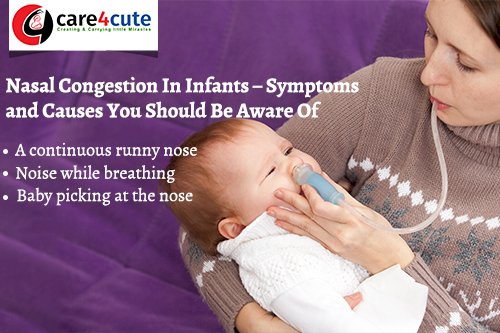
Imagine your troubles on a day when you have nasal congestion (a stuffy nose). It becomes very difficult to breathe, to eat, speak, or sleep. Life seems to come to a standstill. If this is the condition for a grown up, how troublesome it would be for a baby. They becomes frustrated and cranky. They refuse to eat or sleep and get tired.
So, what can be done in such a situation? Is there any method to identify the symptoms and act in time to prevent nasal congestion in babies?
Here ,we are providing some significant information that explains the causes and the ways to bring some relief to your baby from nasal congestion.
The Symptoms and signs:
Your baby is too little to tell you that his nose is blocked. But nasal congestion can be identified from any of the following symptoms:
1. A continuous runny nose: The nose is drooling mucus all the time, and there seems to be no end to it. You wipe it once, and then it gets messy again.
2. Noise while breathing: There is an audible ‘whistling’ sound every time the baby breathes in and out. The noise can be sharp and shrill depending on the severity of the condition.
3. Snoring can occur because of various causes and nasal congestion is one of them. If the baby breathes noisily during the walking hours, then he is likely to snore while sleeping.
4. Baby picking at the nose: Babies do not understand what is happening to their nose. Therefore, to alleviate the irritation,
they pick their nose with their fingers inside the nostrils. This happens in older infants with better finger dexterity.
5. Sneezing: Sneezing clears the nose, but it sometimes blocks it too. A stuffy nose stimulates the nerve endings of the inner lining of the nostrils, which respond through the natural reflex of sneezing.
The symptoms are common and obvious, but they are not standalone as they are associated with some illness.
What Causes Nasal Congestion in Babies?
Nasal congestion can be caused by several underlying problems that cause the accumulation of mucus or inflame the nasal tissue; both cause an obstruction in breathing. Babies have smaller nostrils, and those below the age of two months can only breathe through their nose. Even the older babies are not comfortable at breathing through the mouth. These are the reasons of nasal congestion in babies:
1. Common cold:
It is one of the major causes for snotty noses in infants. There are over 200 viruses that cause cold, but rhinovirus is the most common among them all. Cold viruses increase the formation of thick mucus in the nose and inflame the inner lining of the nostrils. This obstructs the flow of air into the nasal passages, leading to nasal congestion.
Other symptoms: Sneezing, coughing, irritability, low to high fever
Treatment: It is treated through antibiotics identifying the symptoms and through cough and pain medications.
2. Influenza:
The characteristics of influenza are tantamount to those of common cold, but the baby will also have a acute fever. A runny nose is more common in influenza than inflammation of the nasal passages since the flu virus basically targets nose, throat, and lungs.
Other symptoms: Very high fever, body ache, dizziness, loss of appetite
Treatment: The problem is treated through antiviral and antibiotic drugs and pain medication
3. Sinus infection (Sinusitis):
Sinuses are air-filled sacs located at the top and sides of the nose. When pathogens invade these spaces, they form extra mucus, blocking the passage s of the sinuses. Trapped germs and pathogens multiply within and cause inflammation and the further accumulation of thick mucus. The nasal discharge in sinusitis is normally thick and dark in color.
Other symptoms: A headache, fatigue, trouble eating, and sleeping
Treatment: Oral antibiotics and antibiotic nasal drips are recommended.
4. Allergies:
Allergies cause smothery nose in babies just like common cold and influenza. Allergens, like pollen, can inflame the nasal passages and make them secrete surplus mucus. Rhinitis, also known as hay fever, is one such allergic reaction that can lead to stuffy nose in babies.
Other symptoms: Skin hives, diarrhea, stomach pain
Treatment: There is no specific treatment but an allergy can be controlled to the point that it recedes or disappears.
5. Inflammed tonsils or adenoids:
Tonsils and adenoids are tissues that are a part of the lymphatic system. They are the first line of defense in the immunity system, and if they get infected, they can cuase nasal congestion. An enhanced tonsil or adenoid can even put pressure on the nasal passages, constringing them and preventing normal breathing.
Other symptoms: A sore throat, pain while swallowing, noise while breathing
Treatment: The infection can cure on its own if is not severe. Antibiotics help alleviate the intensity. In severe cases of chronic disease, the tonsil or adenoid is removed surgically.
6. Nasal polyps:
Nasal polyps are benign outgrowths of the nasal lining that seems as smooth, spherical, and beady structures of different sizes. They are basically small pockets of mucus stemming from the mucous membrane. Their cause is not known, and they are considered the result of a genetic anomaly. Since nasal polyps develop right inside the nasal passage, they obstruct breathing. A runny nose is one symptom for the presence of nasal polyps.
Other symptoms: Irritation while breathing, snoring, pain in the face
Treatment: A doctor will try to shrink the polyp using oral or injectable medication. If nothing works, then the polyps will have to be removed surgically.
7. Asthma:
Asthma is the constringency of airways that makes normal breathing or breathing during vigorous activities troublesome. Nasal congestion can occur if the babies have asthma due to an inflammation of the respiratory tissues. Noisy breathing due to the restricted passage is common in this condition.
Other symptoms: Frequent shortness of breath, persistent coughing, tiredness.
Treatment: Asthma can be diagnosed using oral and vapor-based medications that reduce its intensity and bring relief from discomfort.
8. Nasal disorders:
Disorders of the nose or sinonasal cavity can lead to a stuffy nose in babies. Some of the general problems are granulomatosis with polyangiitis, Churg-Strauss syndrome, and deviated septum. Granulomatosis with polyangiitis is the inflammation of the blood vessels in the lungs, sinus, and even nose, thus resulting in a runny nose. Churg-Strauss syndrome is an identical inflammatory ailment that causes asthma and nasal congestion. Deviated septum happens when the septum, the tissue that dissociates the nostrils, shifts towards one side, enhancing one nostril but shrinking the other. It can create irritation while breathing and congestion in the tissues of the nose. All these problems occur owing to defective genes or genetic mutations.
Other symptoms: Noisy breathing, drooling nose, asthma, respiratory infections
Treatment: A doctor will recommend medicines to alleviate the intensity of the symptoms and provide long-term relief to the infant.
9. Irritants:
It can range from pollution to dry air. Anything that can irritate the inside of the nose has the potential to trigger excessive secretion of mucus. Dry air can dry the mucus, which can harden causing trouble in breathing.
Other symptoms: Coughing, irritation in the nasal cavity, baby picking the nose repeatedly
Treatment: By keeping the baby away from the irritant can prevent the condition. In the case of dry air, humidifiers can help.
10. Foreign body in the nose:
The reason behind that runny nose could simply be some stuff that your baby pushed up his nostril while playing. Babies can be fidgety, and they love putting things in their mouth. When they are extra playful, they may put something in the nose so deep that they may have a difficult time removing it. Such an object may rot causing an infection, and nasal congestion.
Other symptoms: Difficulty while breathing, repeated crying, thick mucus with a peculiar color
Treatment: If you feel there is a problem in your baby’s nose then inspect the nostrils under bright light. Take the baby to a doctor for a proper checkup.
Nasal congestion can occur at any age and can even affect newborns. The above problems are treated symptomatically, and diagnosis is recommended accordingly. However, there are some simple household remedies which may prove effective in providing stuffy nose relief.
How To Relieve Nasal Congestion?
There are two household methods to provide relief to the baby when he is facing nasal congestion. These methods remove excessive mucus from the nose and ease breathing.
1. Saline drops to release the mucus:
- Saline or salt water is a natural decongestant for a stuffed nose. It can be bought from a pharmacy or prepared at home using one-fourth teaspoon of salt dissolved in 240ml of water.
- Make your baby lie on his back and pour two to three drops of saline water in the infant’s nose. Wait for 30-60 seconds after doing so.
- Turn the baby on his stomach so that the saline drains the mucus out. Use a tissue paper to catch the snot.
- Gently squeeze the baby’s nose to expel the remaining mucus.
- this method can be used even when the baby has dried mucus since saline will soften and release it from the nostrils. Saline water drops is a safe household remedy for nasal congestion in babies, and it is recommended by the American Academy of Pediatrics.
2. Nasal suction bulb to draw the mucus:
- The nasal suction bulb is also named aspirator and is helpful in bringing the mucus out into the integrated rubberized container (bulb).
- Press the air out of the bulb to create a vacuum and place the tip of the bulb around the rim of the nostril. Do not insert it deeper since it may damage to the delicate and feeble inner lining.
- Gently release the squeeze grip, and the mucus gets drawn into the bulb.
- Press the bulb into a tissue paper to release its content. Rinse it with warm water before using it again. Use the bulb exclusive for the baby and do not share it with anyone else including a sibling.
Other remedies for nasal congestion, such as steam showers and antihistamine medicines, work for adults but may not be effective in babies. Never use decongestants or other drugs to liquefy dried mucus. There is no treatment for dried mucus and saline drops are the only safe option. If the problem is acute, then take the infant to a doctor, who will prescribe the right medication for blocked nose and the underlying condition that is causing it.
When To Rush to the Doctor?
The symptoms of nasal congestion themselves call for medical attention. However, in the following situations you must be quick in consulting the doctor.
1. If mucus is blood-stained: Even a tinge of blood in the mucus could be a symptom of some serious problem like a bacterial infection. Let the doctor check it soon.
2.If nasal discharge is green or yellow: Infections of the sinus or the presence of a foreign body in the nose are among the normal reasons for staining the clear mucus. These can be removed through the medication recommended by a specialist doctor.
3. Nasal congestion is accompanied by high fever, sore throat, or body rashes: It could mean an severe viral infection or a bout of acute allergy. Prompt medical attention is recommended.
4. In case a runny nose is for more than 15 days: then it is better to get the baby checked by a doctor.
5.In case the baby is less than two months old: Newborn babies do not have the reflexes to expel the mucus nor can they breathe from their mouth. This precarious situation can obstruct other activities like feeding and sleeping.
Without waiting for the situation to aggravate, take immediate steps in the initial stages to avoid the stuffy nose problem in your baby.
How to Prevent a Stuffy Nose In Babies?
Here are two simple ways to avoid the onset of nasal congestion in a baby, and to ensure his airways stay healthy:
1. Keep the air and the baby’s surroundings clean. Keep dust and other pollutants at bay. Use an air purifier if your baby is sensitive to suspended particles in the air. Also, keep the baby’s personal items clean so that he does not ingest pathogens.
Never use deodorant or any other substance with intense fragrance around the baby, to prevent triggering of heavy formation of mucus. Often, this can result in serious conditions such as asthma.
2. Use a humidifier or a mist vaporizer if possible. It maintains moderate levels of humidity in the air and prevents dry conditions in the room. Dryness can lead to mucus formation in the baby.
Nasal congestion is troublesome for the baby and you too. You can overcome the problem by taking care of the little one and making sure that his surroundings are clean. Use some simple remedies to clear up his nose.
If you have any interesting experience to share about nasal congestion in babies, Do let us know in the comment section.








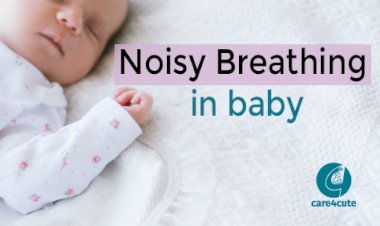






















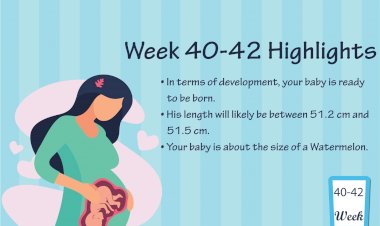
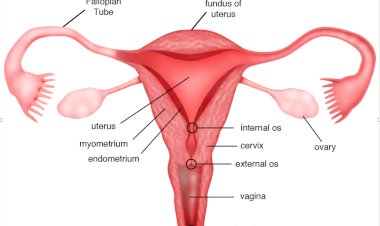
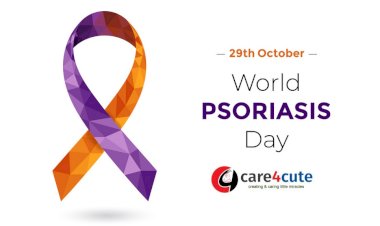


Comments (0)